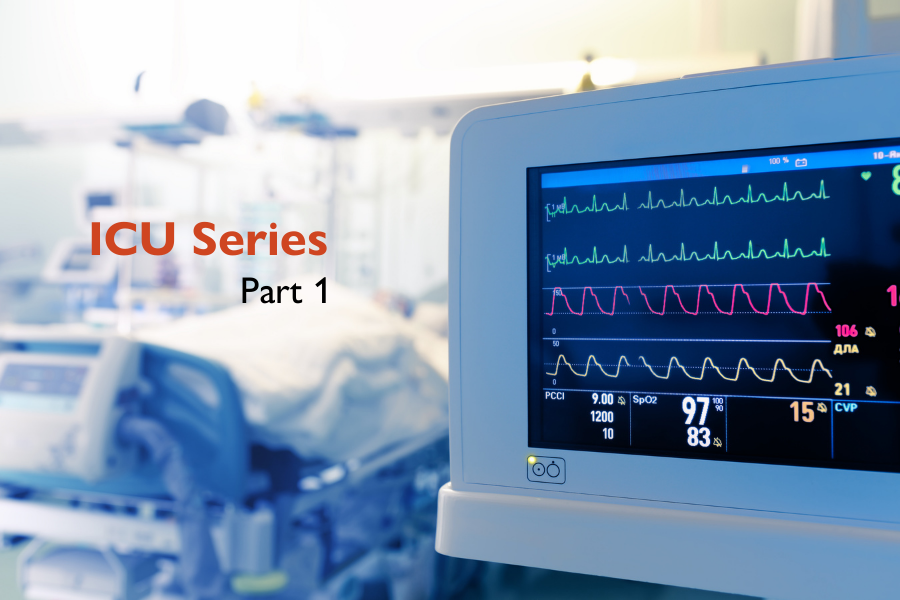Dietitian Blog, MNT Guidelines, Nutrition Support | Aug 9 2022
Part 1: Metabolic changes during critical illness | ICU series

When in the midst of critical illness, your patients are experiencing significant physiological changes. In general, these adaptations are designed to help the patient fight for survival. But in some cases, these changes can result in metabolic alterations that challenge a dietitian’s typical feeding strategy. What’s happening and how can you adapt your nutrition intervention?
Hormonal Changes
Within hours of the onset of critical illness, the hypothalamic-pituitary axis will be activated. This system stimulates the release of adrenocorticotropic, thyroid-stimulating, and growth hormones from the anterior pituitary gland. Adrenocorticotrophic hormone is responsible for the production of cortisol. Thyroid-stimulating hormone revs up the body’s metabolism. And growth hormone is involved in the regeneration of cells and tissues.
Meanwhile, circulating levels of ghrelin, the hunger hormone, plummet. In contrast, peptide YY and cholecystokinin levels rise. Altogether, this promotes anorexia in the critically ill patient.
Inflammation
As a part of the typical immune response, the body releases antibodies, cytokines, and inflammatory mediators. Inflammation is a normal aspect of critical illness. Problems arise, however, when inflammation gets out of control. Interleukin (IL)-1 and -6 can contribute to protein and fat breakdown, ultimately leading to weight loss.
There also seems to be a link between inflammation and the overproduction of reactive oxygen species, which leads to oxidative stress. Higher levels of inflammation lead to more oxidative stress, and vice versa, creating a vicious cycle. Patients who are hypoxic, have suffered a cardiac arrest, or are recovering from shock will develop even higher levels of oxidative stress. As the scales tip in favor of oxidative stress, lipid membranes, DNA, and proteins are damaged.
This increase in oxidative stress is of particular importance, as it can damage the mitochondria. Recall that mitochondria are the energy centers of the cell. Mitochondrial damage can impair energy production and other cellular functions. Research has found a correlation between the severity of mitochondrial damage and overall prognosis in septic patients.
Metabolic Derangements
Ultimately, the patient begins to experience some metabolic derangements in response to the huge disruption in homeostasis. Metabolism shifts to catabolism, breaking down glycogen, protein, and fat stores. Loss of fat and protein can be dramatic and typically leave the patient in a net negative nitrogen balance. Some experts believe that patients can lose up to 5% of their lean body mass each day.
In a desperate attempt at survival, insulin resistance develops. Why? Vital organs now have priority to receive nutrients, so liver-controlled glycogenolysis and gluconeogenesis are in overdrive. Delivering carbohydrates to peripheral tissues via insulin is no longer a priority. This can also contribute to hyperglycemia, which is often characteristic of acute illness.
Impact on Nutritional Plan of Care
When it comes to energy needs, there is an unpredictable ebb and flow. It is believed that energy needs are actually reduced in the early stages of critical illness, before increasing dramatically in the later stages. When this transition occurs can be difficult to predict. To complicate matters, physiological changes (fever, agitation, hypothermia) or treatments (sedation, paralysis, dialysis) can impact energy needs. Therefore, nutritional needs should be assessed and reassessed at regular intervals.
Be sure to check out the second and third installments of this series for more information on how to adapt your nutrition interventions for your critically ill patients.
Don’t miss the rest of the series!
Dietitians On Demand is a nationwide staffing and recruiting company for registered dietitians, specializing in short-term, temporary and permanent-hire positions in acute care, long term care and food service positions. We’re dedicated to dietitians and helping them enhance their practice and excel in the workplace. Check out our job openings, request your coverage, or visit our store today!
Reference
Preiser JC, Ichai C, Orban JC, Groeneveld ABJ. Metabolic response to the stress of critical illness. British Journal of Anesthesia. 2014;113(6):945-54.
Who we are
Dietitians On Demand is the nationwide leader in providing dietitians with jobs they love. If flexibility, competitive pay, a full benefits package, free CPEUs each month and a team dedicated to dietitians sound good to you, apply to our positions today.





